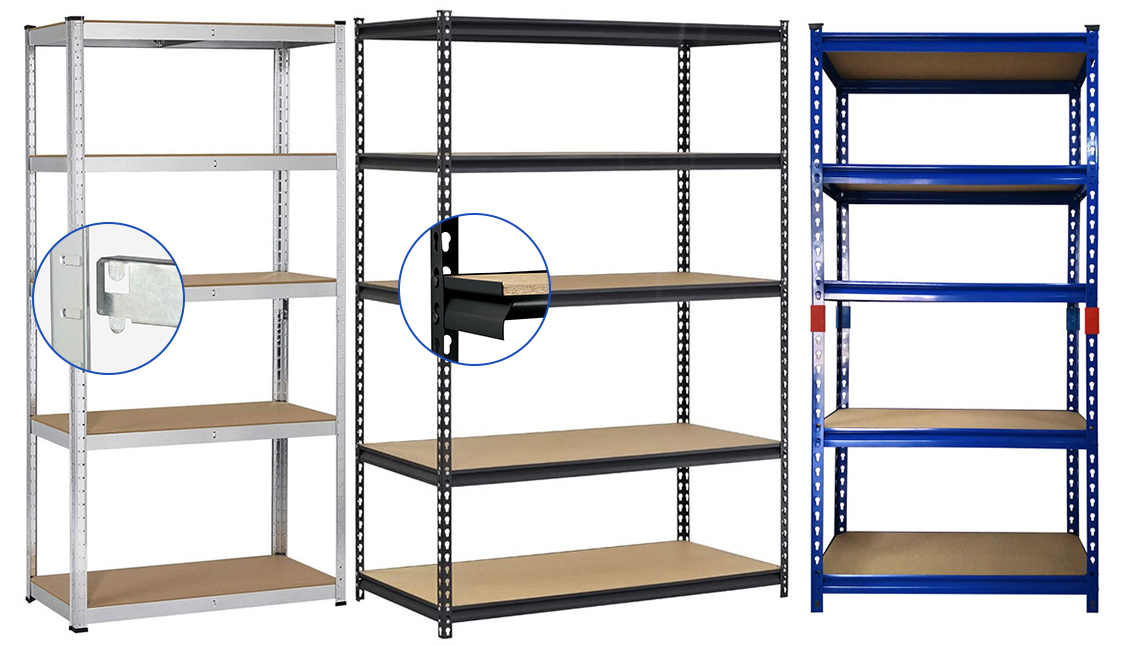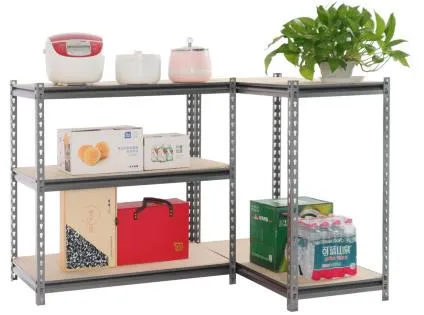Struggling to move bulky items around your warehouse or job site can significantly slow down your operations. Disorganized storage not only wastes space but can also make it difficult to find items, which leads to time-consuming searches and potential safety hazards. Warehouse storage racks are designed to solve this issue by providing a robust, efficient, and safe way to store goods while maximizing available space.
A warehouse storage rack is a highly organized system used to store and arrange items in a warehouse or distribution center. The most popular types of racks include pallet racks, cantilever racks, and shelving systems. These solutions make the best use of both vertical and floor space, improving workflow, accessibility, and safety for employees handling goods.

What is a Warehouse Storage Rack?
A warehouse storage rack is a system of vertical or horizontal shelves used to store goods and materials in a warehouse, industrial facility, or distribution center. These racks are designed to help businesses efficiently manage their storage space by creating organized systems where items are easily accessible. Typically made from steel, metal, or heavy-duty materials, warehouse racks are built to hold heavy loads and withstand long-term usage.
The main function of a warehouse storage rack is to create more space by utilizing vertical storage. This means you can store more products in the same floor area by stacking items up instead of spreading them across the ground. Additionally, these racks are highly customizable, allowing for adjustments to suit different types of products, such as palletized goods, bulk storage, and even long items like pipes or timber.
Why Invest in a Warehouse Storage System?
Investing in a warehouse storage system is one of the best ways to ensure your warehouse operations run smoothly and efficiently. Here’s why:
Using storage racks allows businesses to make the most of their available warehouse space. Instead of cluttering the floor with items, racks make full use of vertical space, which is often underutilized in many warehouses. This vertical storage enables you to store more goods in the same area, increasing storage density without expanding the physical footprint of your warehouse.
An organized warehouse storage system makes it easier to locate and retrieve items. This reduces the amount of time spent searching for products and minimizes delays in order fulfillment. A well-organized system helps your warehouse staff perform their duties faster, allowing for quicker turnaround times, improving overall productivity and efficiency.
When items are improperly stored, they pose a significant safety risk to your warehouse employees. With proper racking systems, you can reduce the chance of accidents like items falling from shelves or employees tripping over improperly stored products. A heavy-duty warehouse rack system ensures that all products are securely stored, reducing the chances of injury.
What Types of Warehouse Storage Racks Are Available?
There are several types of warehouse storage racks designed to accommodate different types of inventory and warehouse requirements. Below are some of the most common types:
Pallet Racks
Pallet racks are the most common type of warehouse racking system and are designed to store goods on pallets. These racks are highly customizable and come in different configurations to suit various product sizes and storage requirements. Selective pallet racks are ideal for storing items that are frequently accessed, while drive-in pallet racks maximize storage density by allowing forklifts to drive into the rack.
Cantilever racks are used for storing long, bulky items like pipes, timber, and steel rods. These racks have horizontal arms extending from a vertical support structure, making them perfect for storing items that do not fit well on traditional pallet racks. Cantilever racks are available in both single-sided and double-sided versions, making them versatile for different storage needs.
Flow racks use a system of rollers or conveyors to allow items to move forward as products are removed. This type of system is ideal for high-turnover products or for use in order picking systems. Pallet flow racks are commonly used in warehouses that require quick access to products, ensuring that items flow smoothly from the back to the front of the storage area.
Pushback racks allow for the storage of pallets on a series of rolling carts that can be pushed back, which helps maximize the use of space. These racks are ideal for businesses that need to store items with lower turnover rates, as they allow for high-density storage while still maintaining accessibility.
What Are the Key Features of a Warehouse Storage Rack System?
When considering a warehouse storage rack system, there are several key features that can enhance its functionality:
Many warehouse racking systems are designed to be adjustable, allowing businesses to customize the shelving heights and configurations based on their unique storage needs. Adjustable shelving systems allow for flexibility, making it easier to accommodate different sized goods.
Heavy-duty racks are constructed from steel or metal to ensure they can handle the heavy loads typically found in warehouses. These racks are built to last and can endure constant use in demanding environments.

Safety is crucial in a warehouse environment. Look for warehouse racking systems that include rack protection, such as guardrails, wire decking, and bracing, to ensure the stability and safety of your racks. Properly securing items on pallet racks also reduces the chances of accidents.
How to Choose the Right Warehouse Racking System for Your Needs
Selecting the right warehouse racking system for your operation involves considering factors such as the type of products you are storing, the size and layout of your warehouse, and the volume of inventory you need to manage.
Consider the Load Capacity
First, determine the weight of the goods you’ll be storing. If you’re dealing with heavy items, such as machinery or large palletized goods, opt for heavy-duty pallet racks or steel racking systems. For lighter goods, more flexible options such as shelving units or adjustable racking systems might be sufficient.
Maximize Vertical Storage
Ensure the system you choose makes full use of available vertical space. For high-density storage, pallet flow racks or drive-in pallet racks are excellent choices. If you have long items such as pipes or timber, cantilever racks will provide the most efficient storage solution.
Ease of Access
Consider how frequently you need access to certain items. Selective pallet racks provide quick access to individual pallets, while pushback racks and flow racks are better for items stored in bulk with low turnover rates.
The Importance of Pallet Racks and Their Benefits
Pallet racks are essential for creating an efficient and organized warehouse. Some of the key benefits of pallet racks include:
-
Optimized Storage Space: By using pallet racks, you can store items vertically, making use of the available height of your warehouse.
-
Improved Inventory Management: With easy access to palletized goods, warehouse staff can quickly locate and retrieve items, improving overall productivity.
-
Safety: Well-organized racks ensure that products are securely stored, minimizing the risk of items falling or becoming damaged.

How to Maximize Warehouse Storage Space
Maximizing warehouse storage space is crucial to improving efficiency and reducing operational costs. Here are some strategies:
-
Use Vertical Space: Install overhead racks or warehouse shelving to utilize unused ceiling space.
-
Optimize Aisle Widths: Adjust aisle widths to make more room for racks without compromising accessibility.
-
Implement Dynamic Storage Solutions: Consider pallet flow racks or pushback racks for high-density storage that maximizes vertical and horizontal space.
By implementing these solutions, you can greatly enhance your warehouse storage solutions and increase overall productivity.
Warehouse Racking Installation and Maintenance
Proper installation and maintenance are essential for ensuring the longevity of your warehouse racking system. Here’s how you can maintain your racking system:
-
Professional Installation: It’s crucial to hire experts for pallet rack installation to ensure everything is correctly assembled and meets safety standards.
-
Regular Inspections: Frequently inspect your racks for wear and tear, and make sure all bolts, joints, and components are tightly secured.
-
Routine Cleaning: Regularly clean your pallet racks and shelving units to prevent dirt and debris from accumulating.
FAQs
-
What is the ideal load capacity for a warehouse storage rack?
A good warehouse storage rack should have a load capacity that aligns with the weight of the items you’re storing. Heavy duty racks can support up to 500 lbs or more. -
How do I maintain my warehouse storage racks?
Regularly inspect your storage racks, especially the pallet racks, for any wear or damage. Clean them regularly and ensure they are functioning properly. -
Can I customize my warehouse storage system?
Yes, many suppliers offer customizable warehouse storage solutions to meet your specific needs, including adjustable shelving units and specialized pallet racks. -
How do I choose between cantilever and pallet racks?
If you’re storing long, bulky items like pipes or timber, cantilever racks are ideal. For palletized goods, pallet racks are the better choice.
Post time: Apr-23-2025
